Do you know Canada was called ” New-France ” during 17th Century
For an Indian , Canada is far-far away and is in another planet. When there is Day in India , there is night in Canada. A country 12,000 Km away from India with 16 hours non stop flight is unreachable from India by land. Since Canada lies on the west , if a flight start midnight from India to Canada , you will find night sky outside throughout your 16 hour flight. But if your flight start mid day , you will find blue sky outside window during flight from take-off from India to landing in Canada . Isn’t it amazing . Canada have been dream destination for Indian Punjabis of aprox 1.0 Million Punjabis are living in Canada which is 2.5% of Canadian population.

History – The history of Canada is rich and diverse, spanning thousands of years of Indigenous civilizations and more recent European exploration, colonization, and development. Here are some key milestones :
Indigenous Peoples: Canada’s history begins with Indigenous peoples who have inhabited the land for millennia. They developed complex societies, cultures, and trade networks long before the arrival of Europeans.
European Exploration and Colonization: The first European explorers to reach Canada were the Norse around 1000 CE, but significant European exploration began in the late 15th century with John Cabot and Jacques Cartier.
French Colonization: In the early 17th century, France established colonies in present-day Quebec and Acadia (Maritimes), focusing on fur trading and missionary work. The colony of New France grew slowly but maintained a distinct French character.

British Conquest: Throughout the 18th century, British and French interests clashed in North America, culminating in the Seven Years’ War (1756-1763). The British victory led to the Treaty of Paris (1763), transferring most of New France to British control.
Confederation and Expansion: Following the American Revolutionary War (1775-1783), many British loyalists migrated to Canada, increasing its population. In 1867, Canada became a self-governing dominion within the British Empire through the British North America Act (now known as the Constitution Act, 1867). This event is celebrated as Confederation Day (Canada Day).
World Wars and Nation-Building: Canada played significant roles in both World War I and World War II, contributing troops and resources. These wars helped solidify Canada’s identity as a nation separate from Britain and establish its international reputation. After World War II, Canada experienced rapid economic growth and social change. It became a leader in social welfare, healthcare, and multiculturalism.
Modern Canada : In 1982, Canada patriated its constitution, creating a framework for fundamental rights and freedoms under the Canadian Charter of Rights and Freedoms. Indigenous rights movements have gained prominence, leading to legal and social changes recognizing Indigenous sovereignty and self-governance. Today, Canada is known for its multiculturalism, strong economy, universal healthcare system, and commitment to peacekeeping and international diplomacy.
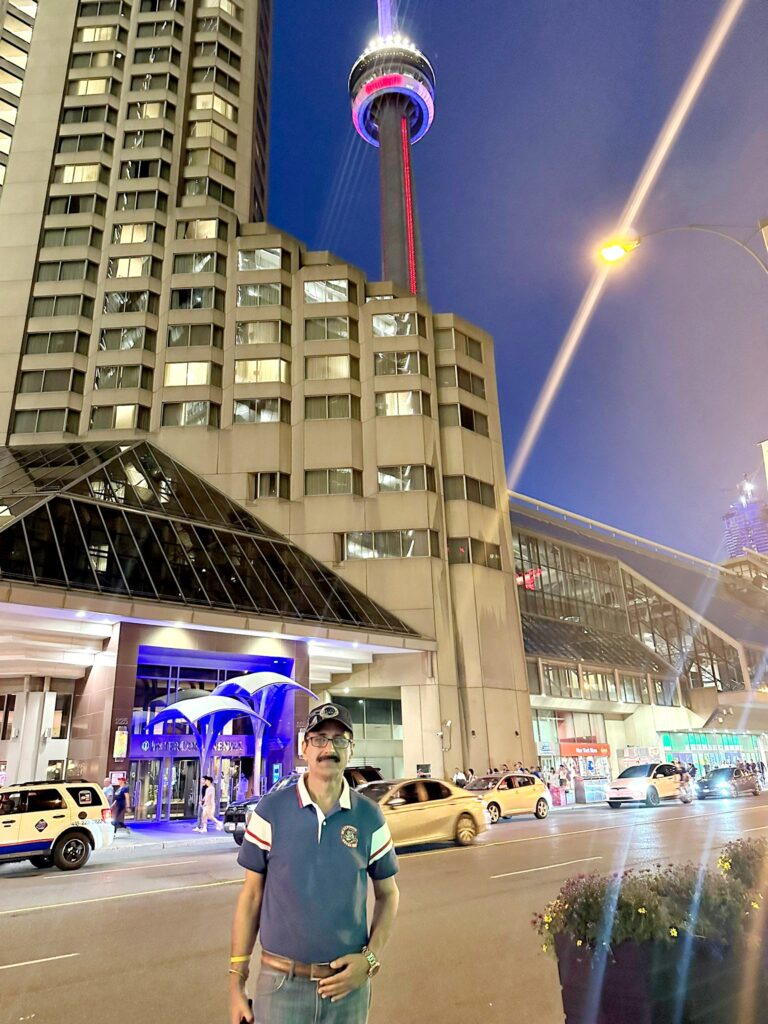
Toronto : – On my recent repeat visit to Canada I got a chance to explore Toronto , the biggest city of Canada. Canada was ruled by French 16th to 18th Century and then then by Britisher in 18th to 19th Centaury . Canada which was liberated from France in 1867. Canada with area of 10 Million Sq Km ( 2% of Total world land area ) is second largest in the world , but with the population is 39 Million ( ie 0.5% of world’s population ) . With a huge land and with a little population Canada is considered one of the most scenic country with lakes , mountain and vast green land. The city of Toronto to Canada is as equal to New York to USA and Mumbai to India, all commercial hubs of these countries
Toronto’s history is shaped by its Indigenous origins, European settlement, rapid urbanization, cultural diversity, and economic development. Here are key milestones in the history of Toronto:
Indigenous Settlements: The area now known as Toronto has been inhabited for thousands of years by Indigenous peoples, primarily the Huron-Wendat, Seneca, and Mississauga nations. They lived in villages around Lake Ontario and traded with European settlers.
European Exploration and Fort York: In 1750, French traders established a fort near present-day Toronto, but it was abandoned in 1759. In 1793, the British established Fort York to defend Upper Canada against American invasion during the War of 1812.
Town of York: In 1793, Lieutenant Governor John Graves Simcoe designated the area as the town of York, naming it after the Duke of York. It became the capital of Upper Canada and an important military and administrative center.
War of 1812: During the War of 1812, York (Toronto) was captured and partially burned by American forces in 1813. The town was rebuilt and continued to grow as a commercial and transportation hub.

Incorporation as Toronto: In 1834, York was incorporated as the city of Toronto. The name “Toronto” is derived from the Indigenous word “tkaronto,” meaning “where there are trees standing in the water.”
Rapid Growth: Throughout the 19th century, Toronto experienced rapid growth fueled by immigration, industrialization, and the expansion of railways and shipping routes. The city became a financial and cultural center, attracting settlers from Europe and other parts of Canada.
Cultural Diversity: Toronto’s population grew increasingly diverse, with immigrants from around the world settling in the city. This diversity enriched Toronto’s cultural life and contributed to its reputation as one of the most multicultural cities in the world.
Expansion and Modernization: In the 20th century, Toronto continued to expand, absorbing surrounding communities and suburbs. The city underwent significant urban development, including the construction of landmarks like the CN Tower (1976) and the development of modern infrastructure.
Cultural and Economic Hub: Today, Toronto is Canada’s largest city and a major global city known for its finance, business, arts, and culture. It is home to numerous cultural institutions, universities, and a thriving arts scene.
Challenges and Growth: Toronto faces challenges related to urbanization, housing affordability, transportation, and social inequality. Efforts are ongoing to address these issues while maintaining the city’s reputation as a liveable and inclusive urban center.
| CITY | POPULATION | AREA – Sq Km | GDP | BILIONARE | SKYSCAPERS |
| Toronto | 6.4 Millions | 641 km2 | 1.07 % | 18 | 80 |
| New York | 19.1 Millions | 469 km2 | 3.5% | 101 | 317 |
| Mumbai | 21.6 Millions | 603 km2 | 3.9% | 92 | 200 |
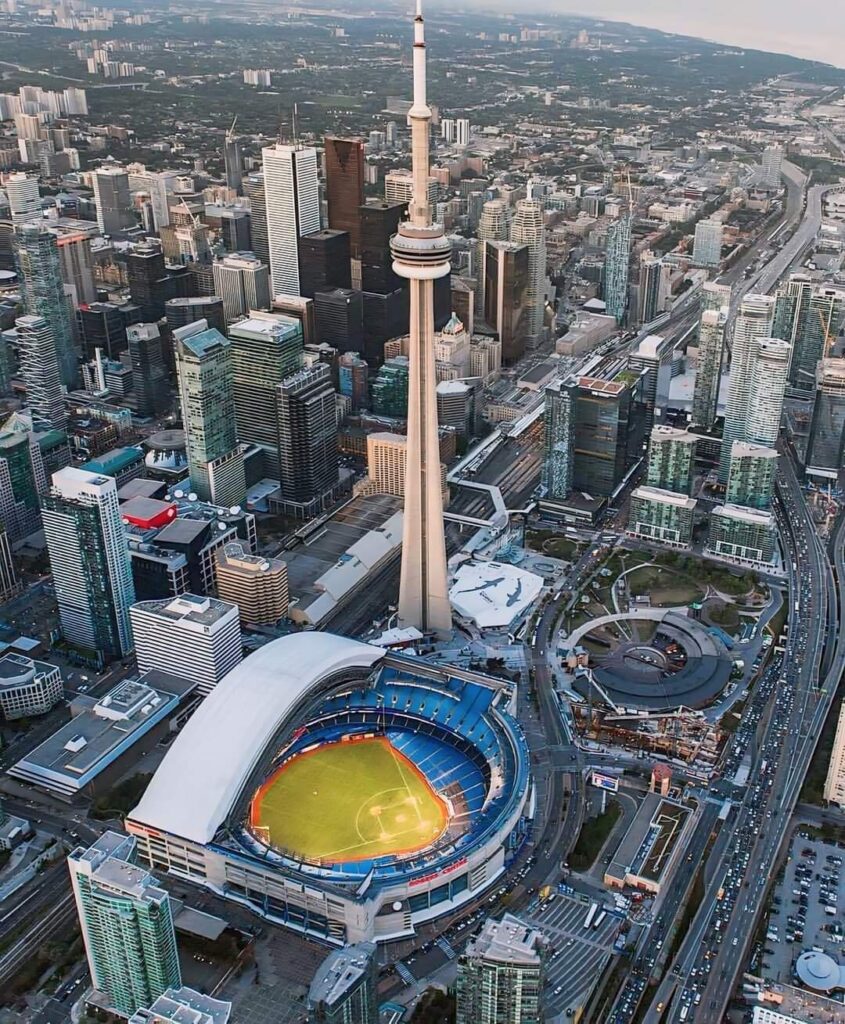
Canada overall have over 1.0 Million international students who pay 4 to 5 time the fees than what Canadian students are paying . Half of population of Toronto are born outside Canada . Toronto have 4 Universities and 4 public colleges and over 100 research centres where 50,000 international students are studying . Since Toronto is a commercial hub the chance of getting employment is better than any other city of Canada. Toronto is a city where people from more than 150 countries live and work mostly on work permits.
Tourist point of Toronto– Toronto offers a diverse range of attractions and neighbor hoods to explore. Here are some areas and places you should consider visiting:
Downtown Core:
CN Tower: Iconic landmark offering stunning views of the city from its observation deck.
Ripley’s Aquarium of Canada: Explore marine life with interactive exhibits and underwater tunnels.
Harbourfront Centre: Cultural hub with art galleries, theaters, and outdoor events along Lake Ontario.
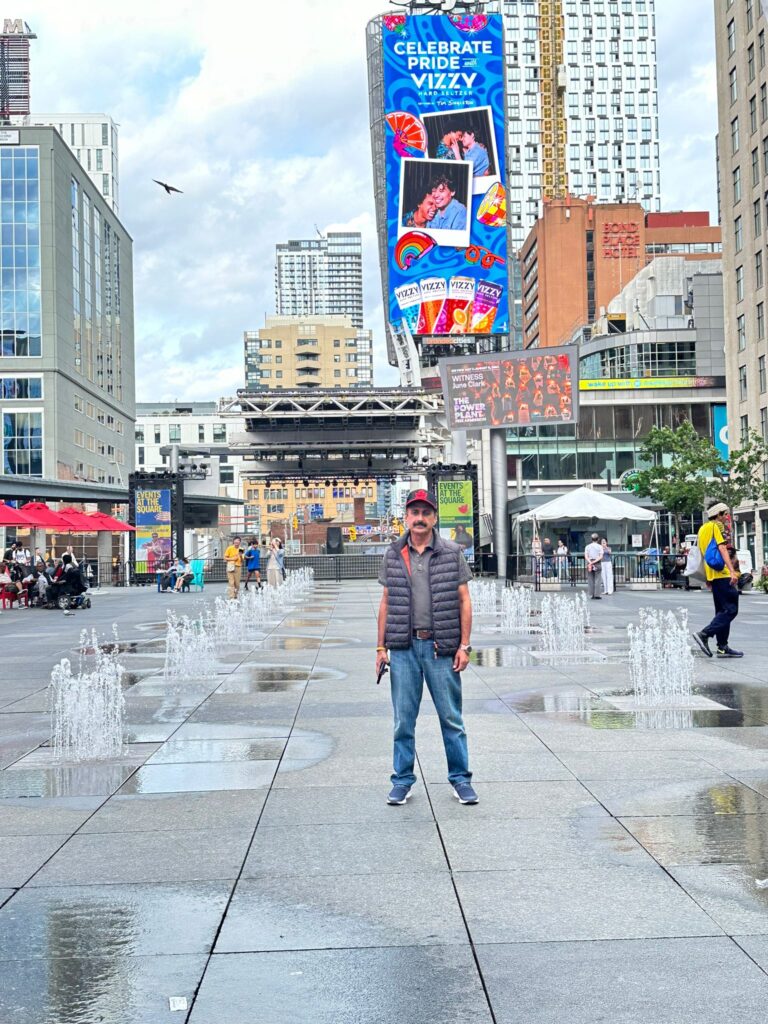
Eaton Mall area :
Eaton Mall – the only prominent mall in Down town Toronto
Dundas Square – A square Time-squarte type with lot of vibration by Tourists .
Nathan Square – A historical monumental spot , great selfie point .
Historic district known for its Victorian-era buildings, cobblestone streets, art galleries, and trendy restaurants.
Great place for shopping, dining, and enjoying local craft beer or spirits.
Kensington Market:
Bohemian neighborhood with eclectic shops, vintage boutiques, international cuisine, and vibrant street art.
Experience the multicultural vibe and unique atmosphere of this lively area.
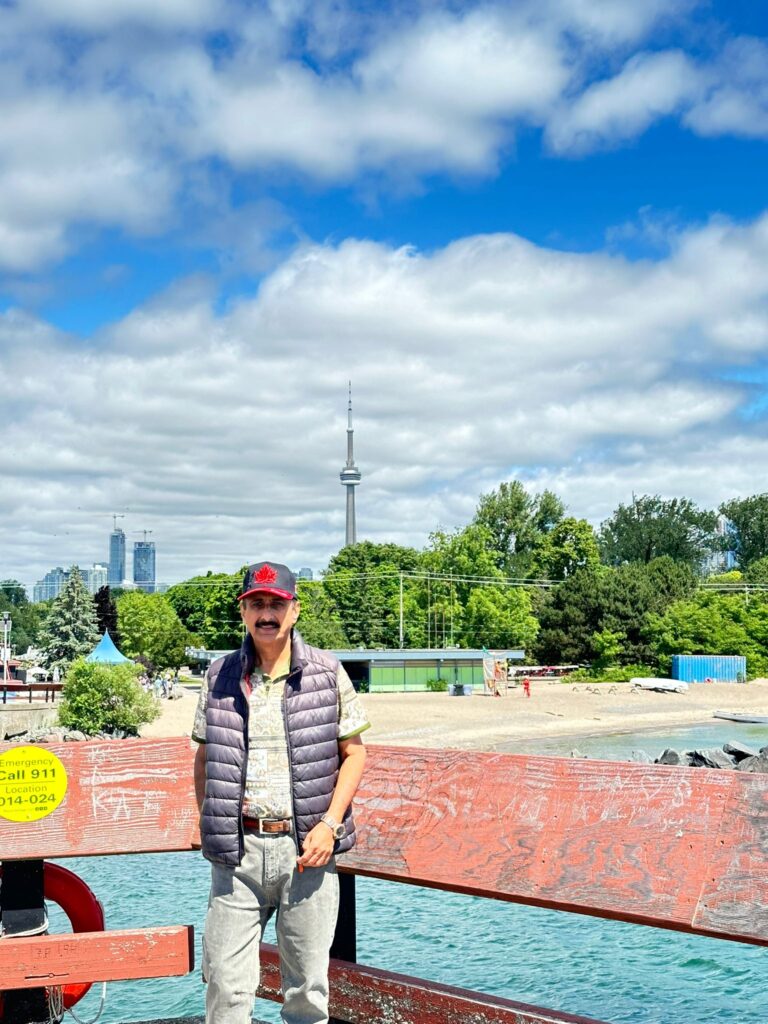
Queen Street West:
Fashionable district with trendy boutiques, art galleries, and hip cafes.
Explore the local fashion scene, street art, and diverse dining options.
Yorkville:
Upscale neighborhood known for luxury shopping, high-end boutiques, and chic cafes.
Home to the Royal Ontario Museum (ROM) and the Bata Shoe Museum.
High Park:
Toronto’s largest public park with lush green spaces, hiking trails, sports facilities, and a zoo.
Visit during cherry blossom season or enjoy outdoor activities year-round.

The Beaches (Toronto Islands):
Escape the city and relax on the Toronto Islands, accessible by ferry.
Enjoy beaches, parks, bike trails, and panoramic views of the Toronto skyline.
St. Lawrence Market:
Historic market offering fresh produce, gourmet foods, and artisanal products.
Explore local culinary delights and enjoy a meal at one of the market’s eateries.
Art Gallery of Ontario (AGO):
Canada’s largest art museum with a diverse collection of works from Canadian and international artists.
Enjoy exhibitions, special events, and guided tours of the gallery.
Chinatown and Little Italy:
Vibrant neighborhoods offering authentic cuisine, cultural festivals, and bustling markets.
Explore unique shops, try diverse dishes, and immerse yourself in the local culture.
These are just a few highlights of what Toronto has to offer. Each neighborhood and area has its own distinct charm and attractions, making it a city worth exploring for visitors and residents alike. During summer there are many concerts and parades happening in Toronto including canada day.
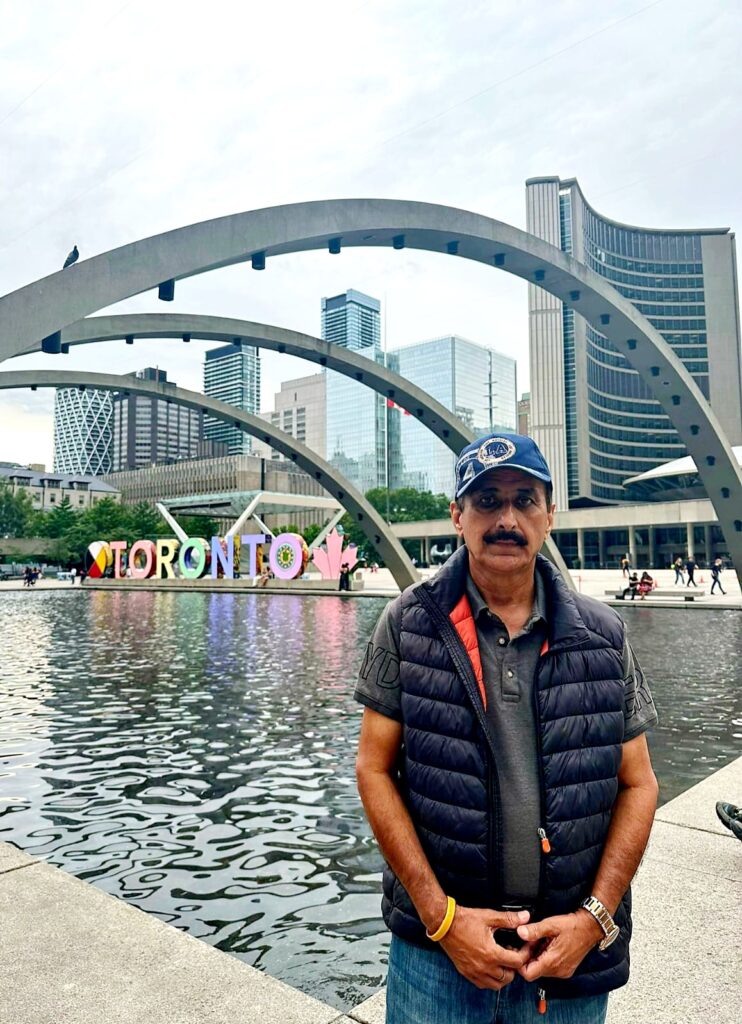
Expensive City Toronto– While Toronto is generally considered a great place to live and visit, like any city, it does have its drawbacks and challenges:
Housing Affordability: Toronto has experienced significant increases in housing prices in recent years, making it challenging for many residents, particularly young people and families, to afford housing. Renting can also be expensive, especially in desirable neighborhoods.
Traffic Congestion: Toronto’s traffic congestion can be frustrating, especially during rush hours. The city’s road infrastructure struggles to keep pace with its growing population, leading to delays and commuting difficulties.
Weather Extremes: Toronto experiences all four seasons distinctly, but winters can be particularly harsh with cold temperatures and heavy snowfalls. Conversely, summers can be hot and humid, which may not be comfortable for everyone. Minimum Temp in winter in Toronto is -ve 6 Degree Celsius and Maximum snowfall of 1.5 feet .
Income Inequality: Despite its prosperity, Toronto, like many large cities, faces income inequality. Some neighborhoods have higher poverty rates and face socio-economic challenges, including access to resources and opportunities.
Public Transit Issues: While Toronto has an extensive public transit system (TTC), it has faced challenges such as overcrowding during peak times, reliability issues, and the need for infrastructure improvements.
Urban Sprawl: Toronto has experienced significant urban sprawl, leading to longer commutes, increased traffic, and environmental concerns related to land use and development.
Crime: While Toronto is generally a safe city, like any urban area, it does experience crime. Certain neighborhoods may have higher crime rates, and issues such as theft, vandalism, and occasional violent crime can occur.
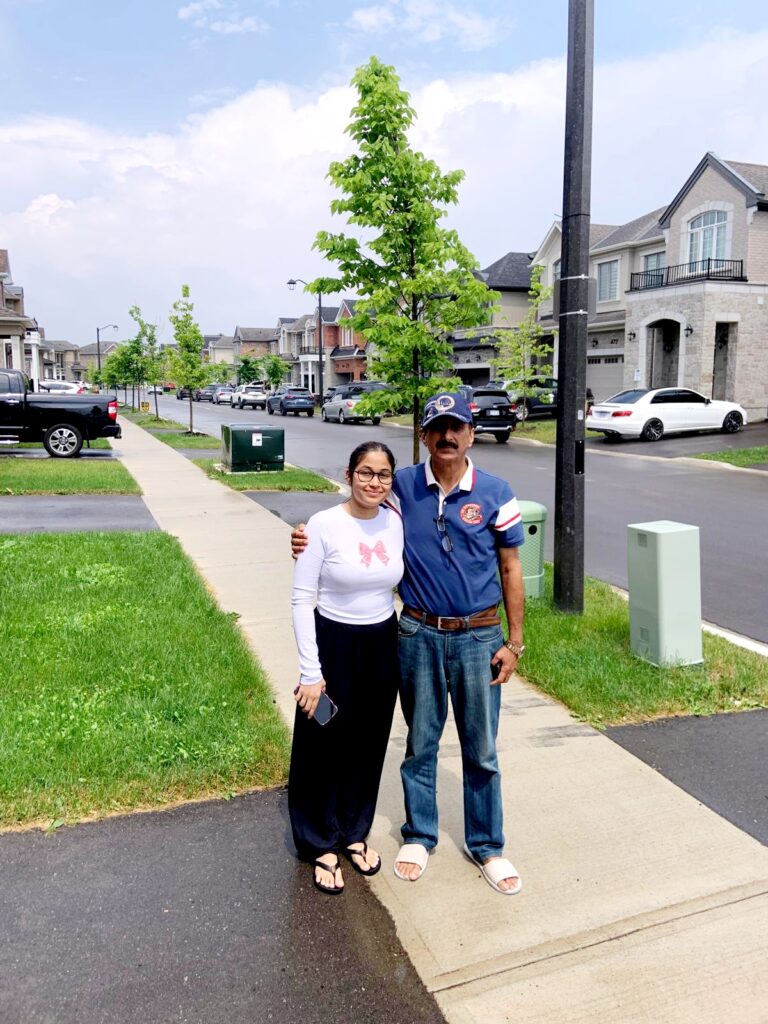
Cost of Living: The cost of living in Toronto, including groceries, utilities, and entertainment, can be higher compared to other cities in Canada. This can affect residents’ disposable income and quality of life.
Healthcare Wait Times: While Canada has a publicly funded healthcare system, wait times for non-emergency medical services can be a concern in Toronto, especially for specialist appointments and elective procedures.
Lack of Green Space in Some Areas: While Toronto has many parks and green spaces, some neighborhoods may lack sufficient access to recreational areas and greenery, impacting residents’ quality of life and outdoor activities.
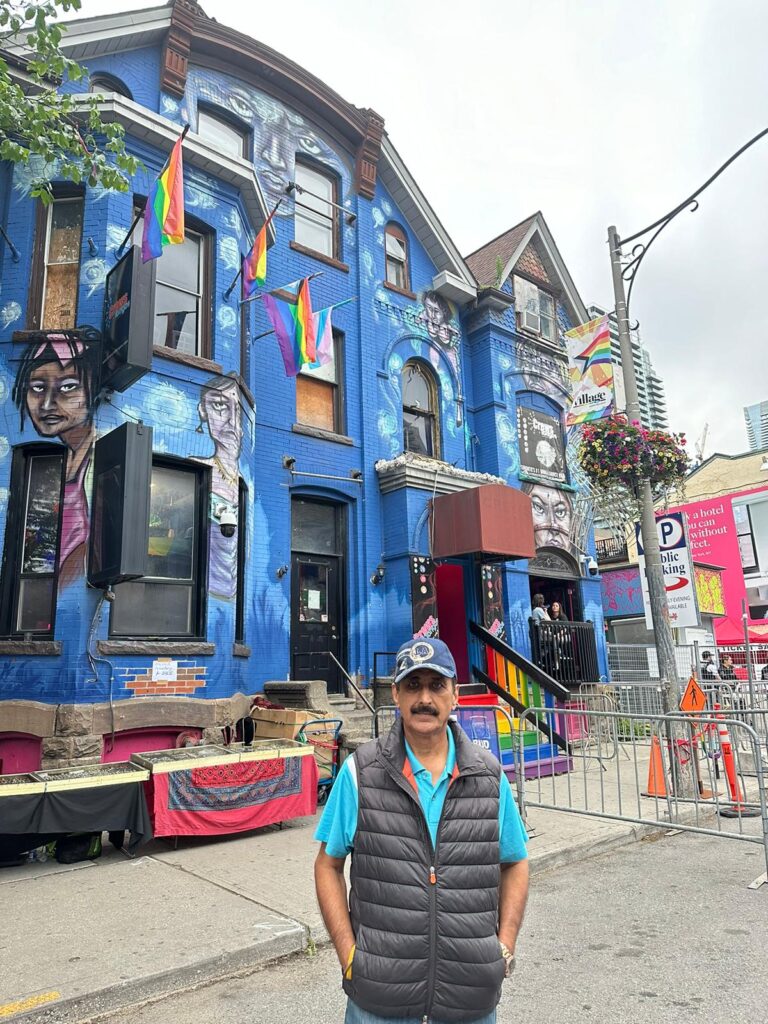
Toronto the other side – Toronto is an expensive city as compared to other Canadian city . The cost which pinch the most is rent of the house and then come the transport and medical treatment. Eating in the restaurants are expensive. Life of the office goers are tough as they end spending quite good hours to travel to place of hours using street car , metro or buses. Toronto city also have people who are homeless , Un-employed . One can also see drug addicts in the dark street of Toronto . thefts of Cars are happening in Toronto due to many have no job and find stealing cars as an easy way to survive. Many already working are finding to earn the sufficient income in a month to survive in the city. Most of the young blue collar job give a salary of Canadian Dollar per hour , which is not sufficient to maintain a family in Toronto City .
| City | Minimum Salary to Survive with a family | Unemployment | Homeless | Car thefts / year |
| Toronto | CAD 6,000 | 7.8% | 10,000 | 12,000 |
| New York | $ 5,000 | 4.5% | 75,000 | 30,000 |
| Mumbai | Rs 40,000 | 5.6% | 20,000 | 3,000 |
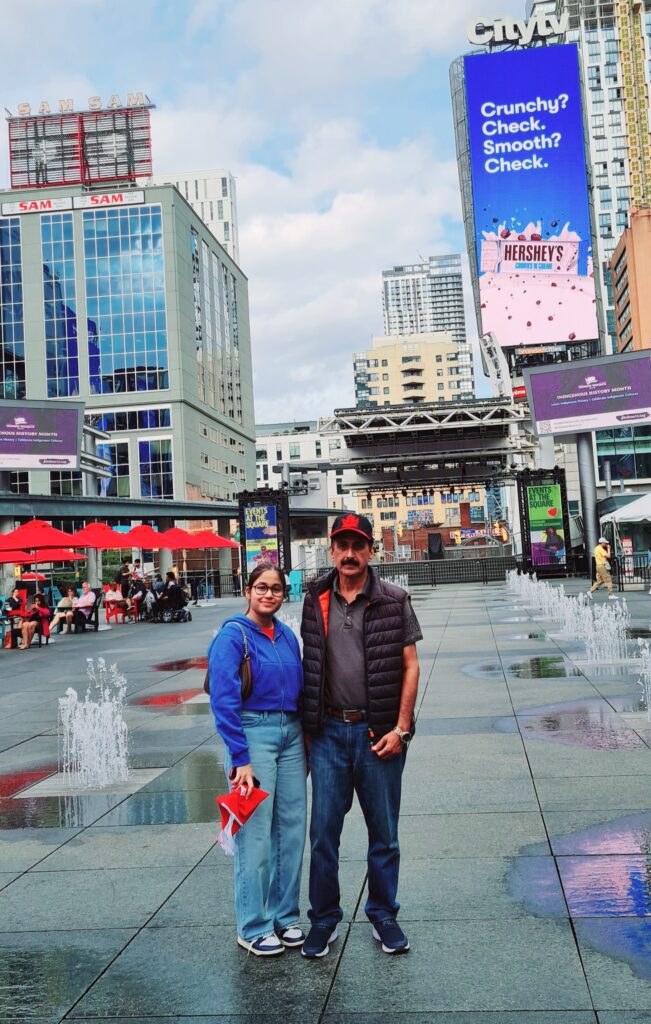
Toronto Life – Life in Toronto, Canada’s largest city and one of the most multicultural cities in the world, offers a vibrant and diverse urban experience. Here are some key aspects of life in Toronto:
- Cultural Diversity: Toronto is incredibly diverse, with over half of its population born outside of Canada. This diversity is reflected in its neighborhoods, cultural events, festivals, and cuisine. It creates a welcoming environment for people from all backgrounds.
- Arts and Culture: Toronto is a hub for arts and culture, with numerous museums, galleries, theaters, and music venues. The city hosts major cultural events such as the Toronto International Film Festival (TIFF) and Nuit Blanche, attracting artists and performers from around the globe.
- Food Scene: Toronto’s food scene is diverse and constantly evolving, offering cuisines from around the world. You can find everything from street food vendors to fine dining restaurants, catering to all tastes and dietary preferences.
- Education: Toronto is home to several universities and colleges, including the University of Toronto, Ryerson University, and York University. These institutions contribute to the city’s intellectual vibrancy and cultural diversity.
- Green Spaces: Despite being a bustling metropolis, Toronto boasts many parks and green spaces. High Park, Toronto Islands, and Scarborough Bluffs are popular destinations for outdoor activities, picnics, and enjoying nature.
- Sports and Recreation: Toronto is passionate about sports, particularly ice hockey (Toronto Maple Leafs) and basketball (Toronto Raptors). The city also offers a variety of recreational activities such as cycling, running, and water sports along Lake Ontario.
- Public Transportation: Toronto has an extensive public transportation system, including buses, streetcars, and subway lines operated by the Toronto Transit Commission (TTC). It facilitates easy access to different parts of the city and surrounding areas.
- Economy and Job Opportunities: Toronto is Canada’s economic engine, with a strong financial sector, technology industry, and diverse job market. It attracts professionals from various fields seeking career opportunities and growth.
- Healthcare and Services: Ontario’s healthcare system provides publicly funded healthcare services, including hospitals and clinics throughout Toronto. Access to healthcare is generally good, although wait times can vary.
- Challenges: Like many large cities, Toronto faces challenges such as housing affordability, traffic congestion, and urban sprawl. Efforts are ongoing to address these issues and improve quality of life for residents.
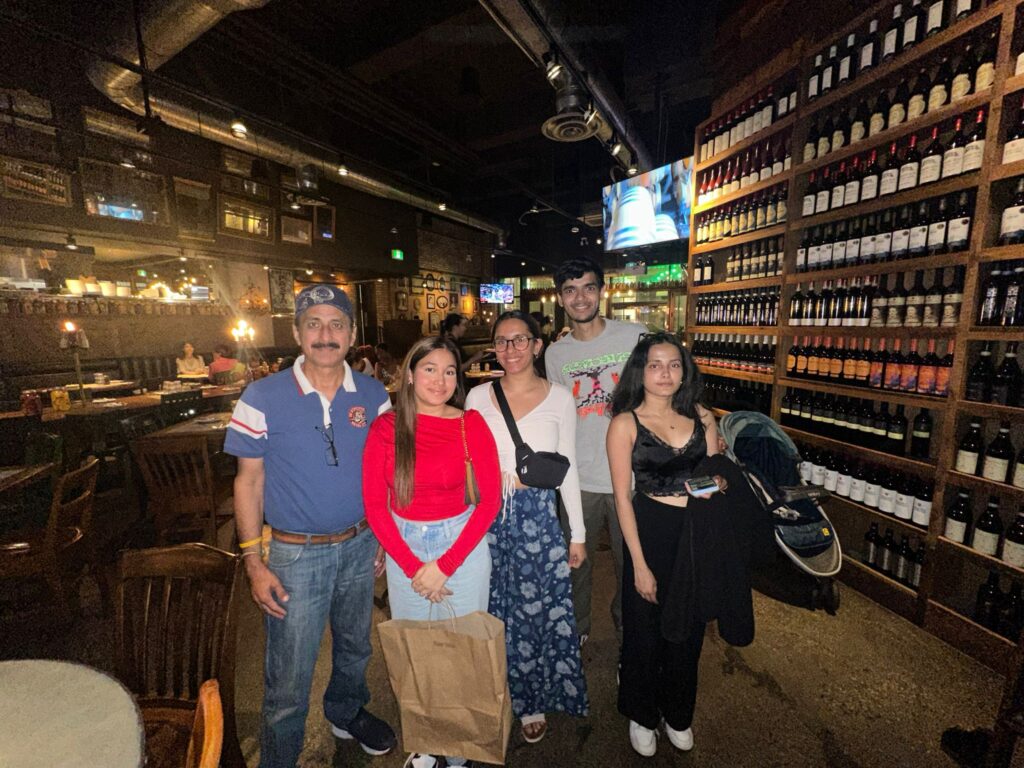
Overall, life in Toronto offers a dynamic blend of cultural richness, economic opportunities, recreational activities, and urban amenities, making it a desirable place to live for many people from around the world.
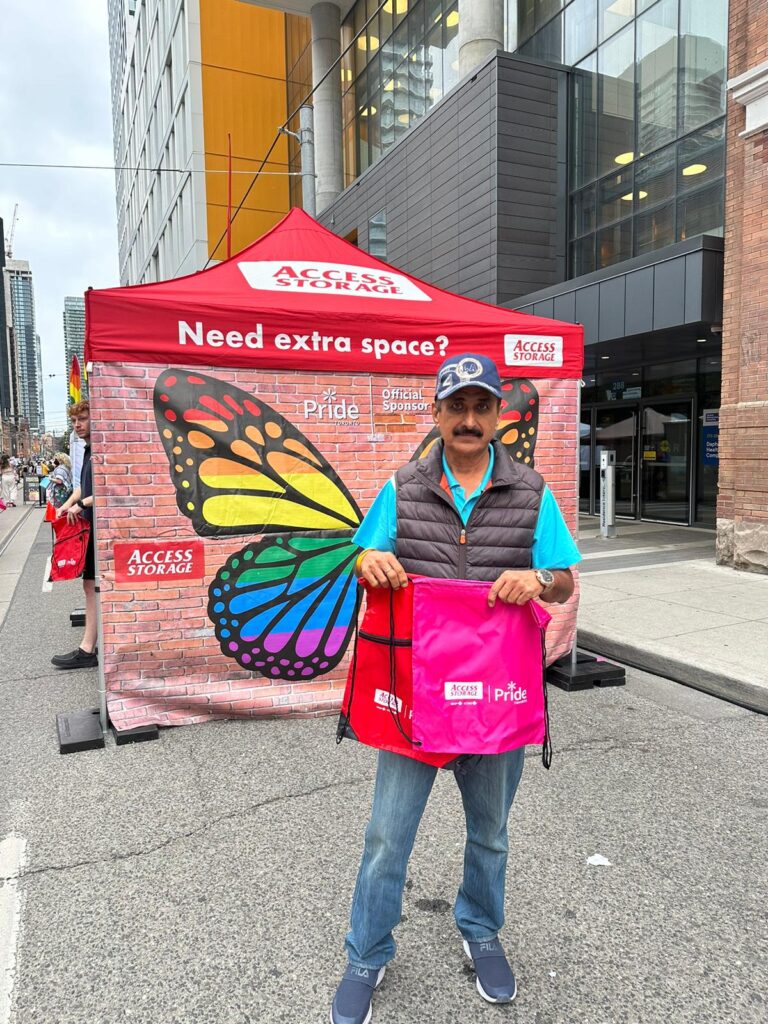
Latest Visit – During my this visit to Toronto I got chance to join the city people for Canada day and Pride march . Pride weeks is celebrated to support LGBTQ community . Pride day Parade in the eyes of conservative Asian culture was a utter nonsense where men and women did parade naked in the streets . With lot of road side stalls giving free gifts. The beauty of Toronto city roads is that Cars , Taxis , busses , trams , trucks and Street car runs at the same time at same level , that is only possible due to great electronic signalling system. And also one can find peoples from over 150 countries in this city looking for their better future , and mostly are struggling .



